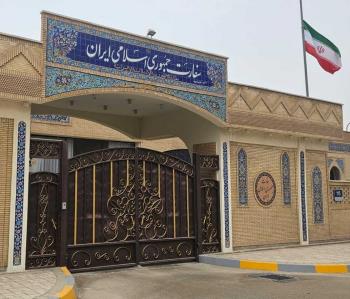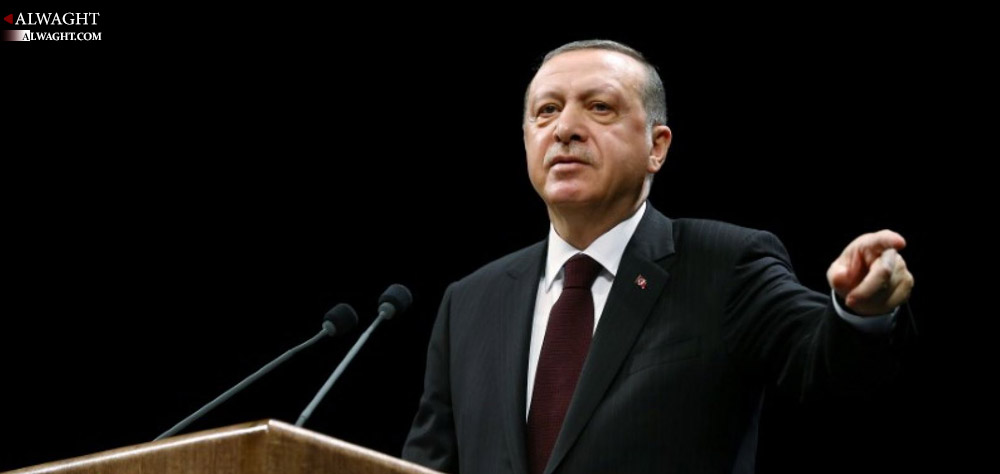Alwaght- The plan announced by the Turkey’s ruling Justice and Development Party (AKP) and the country’s President Recep Tayyip Erdogan in the parliament under the title of “government system modernization” has unbelievably reached its final implementation stage less than a year after raising. Over the past year, the efforts to change the government system of Turkey from parliamentary to presidential have been under way with the slogan of “the Turkish government is for people.” The top officials of the AKP argue that the big change in the country’s political structure aims at securing peace and stability in the country.
When it comes to implementation, the bill of constitutional amendments proposed by the AKP will have two significant stages: first, being approved by the parliament and second winning an advocacy when put to a public referendum. President Erdogan is well aware with that he cannot get the full votes required for finalizing the legislation. Winning two-thirds of the votes is not feasible for him in practice. He earlier was quite sure that with an objection from the country’s opposition parties like the Republican People’s Party (CHP) and People’s Democratic Party (HDP) in the parliament to the bill, his bid will not be endorsed.
In more exact words, passing the Turkish draft bill for constitutional shakeup requires support of 330 lawmakers out of a total of 550. But to turn out into a law without referring to the public vote in a referendum, the bill will need two-thirds of the members of the parliament's votes. This means precisely 367 votes are required out of 550. Considering the fact that AKP's (316 votes) and the Nationalist Movement Party's (39 votes) altogether can offer 355 yes votes to the constitutional bid. The other 12 votes of the MPs were needed for the draft law to achieve passing without going to the referendum.
The constitutional change bill was delivered to the Turkish parliament on December 10, 2016. After initial debates ended on January 21 this year, the country's legislators set to vote on the constitutional amendment draft bill that its main purpose was giving more powers to President Erdogan. The process, however, met the threshold of yes votes of 330 lawmakers enough to put the legislation to national referendum. The aimed changes in the parliament motion of shift from parliamentary to presidential governing system covered modification of 18 articles of the country’s constitution by adding new articles. The bill was delivered to President Erdogan, giving him 60-day time for winning a public approval in a nationwide referendum. The president finalized the law on February 10 and set April 16 this year as the day of referendum.
With all these developments going on, a question presents itself: What are Erdogan's goals and intentions behind overhaul of the constitution and the political structure? To answer this question, three essential goals or motivations must be taken into consideration, part of them are associated with psychological aspects of Erdogan’s ambitious personality while others stem from his political and party objectives.
1. Addressing Erdogan’s desire for power
A strikingly major drive of AKP-proposed plan for alterations to the political system and the constitution should be searched for in the psychological motivations and aspects of Erdogan’s personality. The fact is that Erdogan is caught by megalomania and narcissism while holding the power in the country. Holding the power from 2002 up to now, namely 15 continuous years of ruling the country, gave the Islamist leader of the AKP the self-confidence enough to let him imagine himself to be equal to some of greatest Ottoman sultans like Sultan Suleiman I, with ability to restore magnificence of the empire to the modern-day Turkey.
One of the articles of the altered constitution allows the president to rule the country for three terms in a row with a direct vote from people. This means that Erdogan can stay in power for three five-year terms. In the presidential election, he won his first term of presidency on August 10, 2014 after winning over 50 percent of the public votes. With consideration of additional 15 years in power, it can be claimed that President Erdogan will remain the country’s most powerful political figure up to 2029. In fact, when he passed three terms of being prime minister as the most significant political figure, the constitutional changes were not considered as in best interest of his ambitions. But when he reached end of his term in post of prime minister, Erdogan raised transformation from parliamentary to presidential political system to continue his grasp on power as the first man of the country. Should the constitutional reforms win the green light of the nation on April 16 referendum, Erdogan will rule over Turkey like a monarch during his 27 years of power hold. In general, Erdogan’s psychological and ambitious drives are key to pushing him to propose the constitutional reforms bid.
2. Changing the national government to party government
According to the amendments introduced to the Turkish constitution, the parliament and the prime minister will be stripped of their powers. Instead, the president post will have the unmatched power in the country. Meanwhile, a look at the makeup of the parliament’s lawmakers lets us conclude that the Turkish government will be officially turned into a party-owned government. Actually, the AKP holds 317 seats in the legislative power and keeps a wide gap with the CHP, which has 113 seats. So the AKP is the top power holder in the parliament. If we, additionally, envisage that Erdogan will remain in power up to 2029 as a president, or in other words stays top man of Turkey, we can claim that the AKP can rule the country until end of the second decade of the third millennium. All of the Turkish politicians know that in any public presidential election, Erdogan will win the majority without serious challenges from rivals.
3. Polarization of the society by drawing lines between pro-democracy and pro-terrorism poles
One more Erdogan’s end behind constitutional reforms bill is based on the party goals and a consideration of the future of political outlook of the AKP in Turkey. In his well-calculated game, the Turkish president has labelled the supporters and opponents of the reforms plan as respectively anti- and pro-terror sides. Erdogan in one of his latest addresses directed to Kemal Kilicdaroglu, the CHP's leader, warned him that he should be careful not to side with “terrorists” like HDP, the Kurdistan Workers' Party (PKK) and Gulenist movement, and that he needs to separate his way from them. According to Erdogan’s claims, in the current conditions, the terrorism advocates are against the constitutional reforms while pro-democracy sides are in favor of the changes. Setting in motion such an equation is meant to be a smart game by Erdogan to undermine prestige and legitimacy of the opposition parties which in upcoming elections can win further votes even under the new constitution.



























